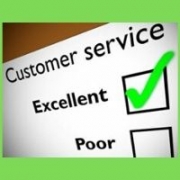People Problems
I can’t tell you how many times I’ve heard someone in a class or seminar say, “You know, we don’t really have that many issues in our spa–we just have people problems.”
According to a study of 1350 spa guests from Coyle Hospitality Group, “people problems” are the predominant issue in every spa. Coyle, the leading mystery shopping firm in the hospitality industry, undertook a survey to determine the most common spoilers of spa experiences.
The summary notes that, “62% of the respondents mentioned ‘People’ as a significant contributor to the bad experience…Nearly two out of every three people that have a bad experience at a spa are talking about staff behavior. This is most interesting because most spa owners feel that the quality of their staff is their most significant competitive advantage.”
This is a bad news/good news situation. As the Coyle report points out, behavioral problems, unlike issues with your plumbing, are usually inexpensive to fix. However, unlike a one-time fix, correcting people problems–and keeping them corrected–requires focus, discipline, and follow-through. It sometimes requires a cultural shift. It sometimes requires more supervision. It always requires training.
Hearing what guests actually experience is an eye-opener. The top complaint in the Coyle study? Over 100 of the respondents indicated that the “staff was not listening, responsive about special needs, or accommodating,” and 100 more felt there was “too much conversation.” 64 guests experienced “unfriendly, impersonal, robotic staff.” Others noted that they were “ignored by staff during treatment; not checked on,” and a significant number encountered, amazingly enough, “offensive, demeaning” staff. (We took pains to include some of these issues in our customer service training, including role play examples of the wrong and right way to handle various conversations.)
If like many spas you’ve been focusing on promotions to get new guests in the door, there’s encouraging news–and perhaps a cautionary tale–in one statistic. “Only a total of 35 out of 1,350 respondents spoke about value…the price paid is not at the heart of the problem” for most dissatisfied guests. This rogues’ gallery of poor communication skills, in short, has more to do with a lack of repeat business than economic conditions.
This is counterintuitive during a major recession, when discretionary spending has shriveled. The new generation of social-networking discount promotion sites, like Groupon, may seem tempting to a spa with lots of empty space on its books. But focusing on quantity over quality will quickly erode any perceived value that remains for your customers. Taking the high road–staying focused on delivering a stellar guest experience–is a healthier strategy for a spa that wants to be in business in for a long time.

